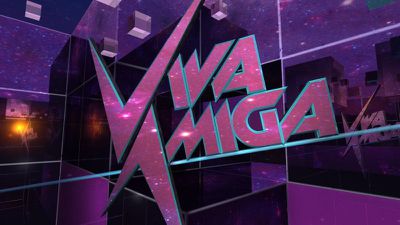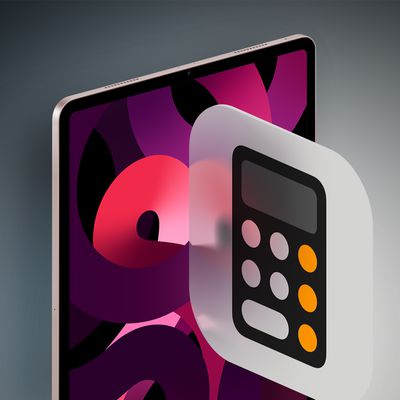Earlier this month, a new Kickstarter-funded documentary debuted on iTunes covering the intriguing history of the popular Amiga computer. Directed by Zach Weddington, Viva Amiga tells the story of how the Amiga project was started in 1985, and successfully captures the excitement of developers and users for what was considered a game-changing platform at the time.
The documentary features interviews with key Amiga engineers as well as some interviews with Amiga users (some of whom continue to use Amigas today), and charts the tremendous highs and incredible lows of the platform over the ensuing decades.

In 1985, an upstart team of Silicon Valley mavericks created a miracle: the Amiga computer. A machine made for creativity. For games, for art, for expression. Breaking from the mold set by IBM and Apple, this was something new. Something to change what people believed computers could do.
From the creation of the world's first multimedia digital art powerhouse, to a bankrupt shell sold and resold into obscurity, to a post-punk spark revitalized by determined fans. Viva Amiga is a look at a digital dream and the freaks, geeks and geniuses who brought it to life.
Acquired by Commodore in 1984 for an estimated $30 million, the multimedia Amiga computer created a stir in Silicon Valley, thanks to accelerated graphics and advanced audio hardware that leapfrogged the competition.
Steve Jobs reportedly became worried about the buzz surrounding the Amiga, because the machine used the same Motorola 68000 processor as the Macintosh, but with its 4,096-color display output, 4-channel sampled stereo sound and multi-tasking GUI, it made the year-old Macintosh look seriously dated.
During an event held at the Computer History Museum, California, where Viva Amiga got its first showing, Amiga Corp. investor Bill Hart confirmed that Steve Jobs took an early interest in the Amiga, and visited the group to watch a demo of what would later become the Amiga 1000. An Apple buyout was even floated, but Jobs reportedly never took the proposition seriously.
Ultimately, little came of the visit, which was later described as a "fishing expedition" for Jobs. Despite being integrated into just three chips, the machine had too much hardware for the Apple CEO's liking, while its full-bus-access expansion port was anathema to Jobs' pursuit of a closed architecture system.
Despite some successes – notably, the best-selling Amiga 500 home computer, introduced in 1987 – poor marketing and an inability to reproduce the heights of early innovations led to the Amiga losing market share to game consoles, IBM PCs, and Apple computers, and Commodore ultimately went bankrupt in April 1994.
Viva Amiga is available to buy for $9.99 or rent for $4.99 on iTunes. [Direct Link]


















Top Rated Comments
It crushed monochrome DOS-based PCs and was priced well below the "expensive" Macintosh that were still mostly viewed as monochrome (and tiny screens) too. The local computer store carried all 3 platforms and it appeared to be so far ahead with color graphics, sound and animation.
With both PCs and Macs monochrome, Amiga was like color TV for lower cost rolling out to compete with Black & White TVs. Just the variable of "color" was enough to be the "killer app" when comparing it to the more established players at the time... but the Amiga was so much more than PC-DOS (no Windows yet) or the Mac OS in color.
The "bouncing ball" demo amazed...
The (32-color) King Tut image from Deluxe Paint was a mesmorizing, digital Mona Lisa at that time. Not only could one create such graphics IN COLOR, but the palette was big enough to offer this crazy thing called painting in color GRADIENTS...
At the time, one might see spot color in print, such as adding one shade of red to a B&W print ad. On Amiga, you could make that same ad and if red was all you needed, you could use 30 (THIRTY!) variants of red. Crrrrrrrazy.
Then, this thing called "halfbrite" mode (I think) upped that to 64 colors, and then "hold & modify" mode opened up 4096 colors. At school, PC screens were still generally green or amber (insert Ford paraphrase: "you can have any color on a PC as long as it is green or amber"). The Mac labs had tiny-screened Macs with only shades of gray... superior to PCs for at least having a range of colors... but they were colorless.
I remember the same King Tut image being recreated on a Mac... in grayscale... and while it looked great on a Mac too, grayscale vs. color was a "what's the point?" moment for anyone looking to buy a computer at that time.
Amiga's "hold & modify" mode could be used for animations too. When exploited, it whammed anyone interested in color graphic animation from a computer with the ray-traced "Juggler" demo in 4096 colors (a mind-blower at the time). Looking back at it now...
...it doesn't look so special but back then it was basically showing a computer could create a new world, what appeared to be 3D characters in that world (that even cast shadows) and have them moving around with sampled sound choreographed with on-screen actions. Juggler begged for concepts like Ray tracing and similar to come to the masses in apps and several good ones quickly followed. Could the inspiration and then implementation of a Pixar be very far behind?
It had a voice long before the others had much of anything that way. It could speak and with a voice one could understand. Every time I hear the Steven Hawking "voice" (even today) I recognize that as one of the voices of Amiga. I suspect that's where HE got it (but don't know that for sure).
It had standardized file formats so that one could share files between apps made by many different companies. The explosion of creative arts software to take advantage of Amiga was really helped along by being able to do some stuff in one app and then move the project into any number of other apps. It all "just worked."
Deluxe Paint and Deluxe Music Construction Set were very early killer apps. I remember taking an elective "arts" course in college and bringing in some original music I had created on an Amiga. DMCS let you compose in music notation and then print the music. I remember the music teacher being shocked when he found out I couldn't play a musical instrument but had written some original music anyway. "You wrote this on a computer?" By the end of that semester, I still couldn't play any instrument but got an "A" anyway on the strength of that (and probably lingering shock).
Games rivaled arcade machines at the time. I think some Amiga games made it into Arcade machines. And game developers really pushed that hardware to stand out from rivals. Arcade translations tended to look & sound just like the arcade games without compromises (except the insatiable hunger for quarters). Those games typically (& entirely) fit into 880K (yes "K") or less. They were tiny files but funnnnnnnnnnn games that looked & sounded great. One didn't have to spend hours or days (or dollars) building a character/car/plane/etc- we just ran the game and played it. Fun. Uncomplicated. Classic arcade without quarters.
If one wanted to learn to code, the native language with Amiga was C (I think well before the other platforms got there). The OS was loaded with callable routines to do relatively complex stuff in graphics, sound, animation, etc without having to know physics or calculus. Stock code libraries were a treasure trove for anyone wanting to code something interesting themselves.
Hardware offloaded complex tasks in graphics, sound & animation to coprocessors well before the others were doing that.
It had a terrific, real multitasking, icon/windows/mouse-based OS that entirely fit in 256K (later 512K) Yes that's "K." The whole OS was so compact that it was built into ROM and thus offered "instant on."
Early computer animators, graphic designers, etc could simply do much more with an Amiga than the other platforms at the time. For gamers, there was pretty much nothing better. Atari ST tried to be a poor man's Amiga and they all competed for gamers against platforms like Atari 5200 and Colecovision. Friends were always impressed with Amiga games and then soon owned an Amiga themselves.
Personally, I wish it could have made it. I'd love to see what a 2017 Amiga would be like.
[doublepost=1485098721][/doublepost]By the way, a lot of Amigas late fails remind me of todays Apple.
I watched the documentary as soon as it came on iTunes. Its good, I wish it was longer and dug deeper (I guess I really want a mini-series since there is so much ground to cover) but as a film on the rise of the Amiga and how the creators and fans reacted, its a great, sweet stroll down memory lane!
Here is a cover story I wrote on using the Amiga at my studio (back in 1990!)
https://archive.org/details/amazing-computing-magazine-1990-08
I had an Amiga 500, then a 500+, and finally an Amiga 1200. Best computing years of my life.
I bought a 20MB hard drive for the 500+. It was basically an extension that slotted onto the side of the keyboard, and I filled it with games. Still remember the excitement of playing Mortal Kombat without having to constantly swap the eight floppies it came on (even between finish moves!).
Thanks for this!
Games!
Music!
A year later at a Toronto World of Commodore show I saw an Amiga 2000 souped-up with a GVP A-3001+ board and I had to have one. the A-3001+ was a card that replaced the stock MC68000 @ 8MHz with a MC68030 @ 25MHz. Plus it had room for an astounding 8MB of RAM. I wrote a check for around $6,000 that day. When I brought my system home it even had an 80MB hard drive. SA4D absolutely flew on that system in comparison to the A-500; it would do a ray-traced render in maybe 30 minutes instead of 6 hours. Shortly after I bought my 25MHz system GVP bumped the speed up to 28MHz and then 33MHz but that's the risk of being an early adopter.
When Deluxe Paint IV came out I couldn't get enough of it. As I worked in TV I was able to pawn my services off to some commercial production companies and I did several title animation contracts that helped pay for the system. Then ca. 1993 I purchased an Amiga-only software package called SignEngine and a Roland CAMM-1 vinyl cutter and opened a home-based sign & banner -making shop. I used a structured drawing package called ProDraw to create the designs, which SignEngine then scaled to size and cut out of vinyl rolls. My Amiga was my only source of income for nearly a decade, and a secondary source for several more years after that. All hard drives eventually crash, however, and mine lasted until around 2007 when it finally gave-up the ghost after 15 years of daily use. At which point I sold my business and got another job doing something else. I kept my Amigas, though -- happy that they paid for themselves many times over, and gave me a successful foray into graphic design & small business proprietorship that I would never have enjoyed otherwise. And to this day I still smile when I see signs created on my Amiga all over town.